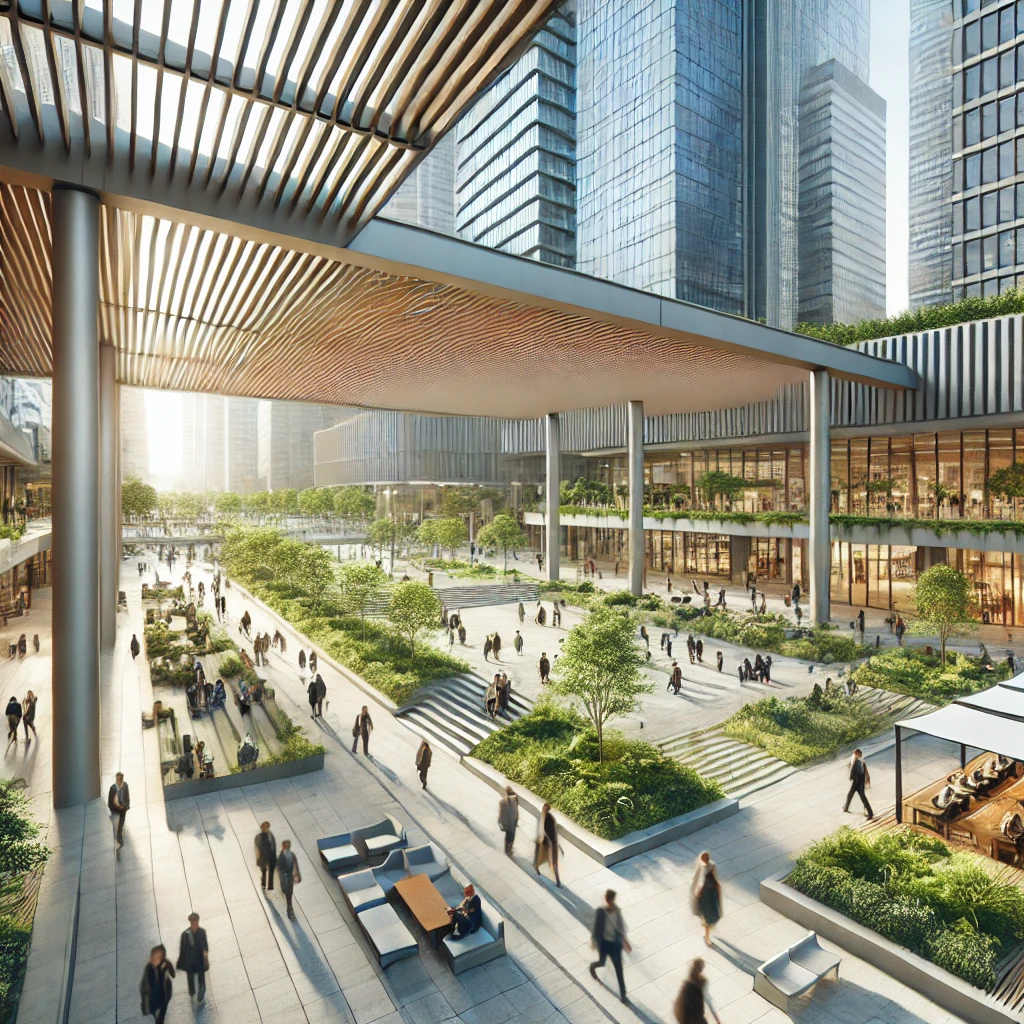In modern urban planning and sustainable development, pedestrian comfort has emerged as a critical consideration for architects, engineers, and city planners. As cities become more crowded and climate conditions shift, ensuring a comfortable and safe pedestrian experience is essential. Pedestrian Comfort Analysis (PCA) plays a vital role in designing urban environments that prioritize walkability, thermal comfort, and wind safety. This blog explores the importance of pedestrian comfort analysis, its benefits, and its applications in sustainable urban design.
What is Pedestrian Comfort Analysis?
Pedestrian Comfort Analysis (PCA) is a specialized study that evaluates the environmental conditions affecting pedestrian movement and well-being in outdoor spaces. It involves assessing factors such as wind speed, solar radiation, shading, temperature, and humidity to ensure that public spaces are designed for comfort and safety.
Using computational fluid dynamics (CFD) simulations and environmental modeling tools, PCA helps predict and mitigate adverse environmental conditions. This analysis is particularly relevant for high-density urban areas, where wind patterns, building layouts, and climate conditions significantly influence pedestrian experience.
Key factors analyzed in pedestrian comfort studies include:
Wind Comfort: Evaluating the impact of building-induced wind acceleration to prevent discomfort and hazards.
Thermal Comfort: Assessing temperature variations, solar exposure, and humidity to enhance outdoor usability.
Shading and Solar Access: Optimizing building orientation and urban furniture placement for comfortable microclimates.
Walkability and Accessibility: Ensuring public spaces are easy to navigate and free from obstructions.
Why is Pedestrian Comfort Analysis Important?
Pedestrian comfort analysis is essential for creating livable and resilient urban environments. Below are some key reasons why PCA should be integrated into urban planning and architectural design:
1. Enhancing Walkability and Public Health
Comfortable pedestrian pathways encourage walking, reducing reliance on automobiles and promoting a healthier lifestyle. Ensuring optimal thermal and wind conditions improves user experience and promotes physical activity in urban settings.
2. Reducing Wind Hazards
Tall buildings and complex urban layouts can create wind tunnels, causing high wind speeds at the pedestrian level. PCA helps identify these risks and implement mitigation strategies such as windbreaks, vegetation, and optimized building geometries.
3. Optimizing Outdoor Thermal Comfort
Climate-responsive urban design ensures that open spaces remain usable throughout the year. PCA helps balance solar exposure and shading, preventing excessive heat in summer and retaining warmth in cooler months.
4. Supporting Sustainable Development Goals
By improving pedestrian comfort, urban spaces become more attractive, reducing the need for vehicular transport and contributing to lower carbon emissions. Sustainable city planning aligns with global climate goals and enhances urban resilience.
5. Increasing Economic and Social Activity
Comfortable pedestrian areas encourage outdoor activities, benefiting local businesses, tourism, and social interaction. Retail districts, parks, and cultural sites thrive when pedestrian spaces are designed with comfort in mind.
Applications of Pedestrian Comfort Analysis
Pedestrian comfort studies are relevant in various urban and architectural projects. Key applications include:
1. Urban Planning and Smart Cities
City planners use PCA to optimize public spaces, ensuring that urban areas remain pedestrian-friendly while adapting to climate conditions and future growth.
2. High-Rise and Mixed-Use Developments
Tall buildings influence wind flow at street level. PCA ensures that these structures are designed to minimize wind discomfort and safety hazards in surrounding areas.
3. Transit-Oriented Development (TOD)
Transportation hubs such as train stations, bus terminals, and airports integrate PCA to improve pedestrian movement, reduce congestion, and enhance outdoor waiting areas.
4. Parks and Recreational Spaces
Public parks and green spaces benefit from PCA by optimizing tree placement, shading structures, and airflow for improved thermal comfort.
5. Retail and Commercial Districts
Outdoor shopping areas and pedestrianized streets thrive when wind conditions and thermal comfort are well-balanced, ensuring a pleasant customer experience.
Tools and Techniques Used in Pedestrian Comfort Analysis
Advanced technology plays a crucial role in conducting PCA. The most commonly used tools and methods include:
Computational Fluid Dynamics (CFD) Simulations: Predicts wind behavior and flow patterns around buildings.
Microclimate Modeling: Evaluates solar exposure, shading, and temperature variations.
Field Measurements: Collects real-world data to validate simulation results.
Environmental Sensors and IoT Integration: Monitors real-time pedestrian comfort conditions for adaptive urban management.
Popular software for pedestrian comfort analysis includes:
ENVI-met
Autodesk CFD
ANSYS Fluent
Ladybug Tools for Grasshopper/Rhino
SimScale
Conclusion
Pedestrian Comfort Analysis is a crucial component of modern urban design, ensuring that outdoor spaces remain safe, comfortable, and sustainable. By incorporating PCA into urban planning, architects and city planners can create environments that prioritize pedestrian well-being while supporting energy efficiency and climate resilience.
As cities grow and climate conditions evolve, integrating pedestrian comfort analysis into the design process will be essential for shaping healthier, more livable urban landscapes. Whether for high-rise developments, public parks, or transit hubs, considering pedestrian comfort leads to a more sustainable and human-centric built environment.

